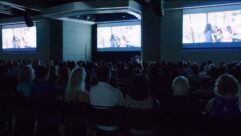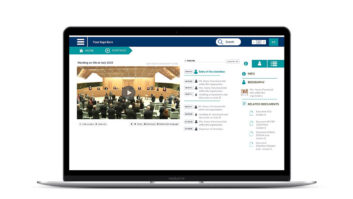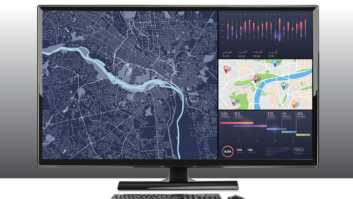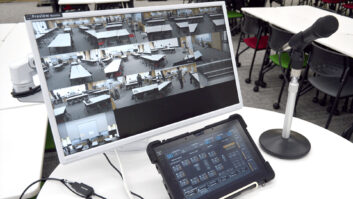
Associations Focus: ICIA Shines
Feb 1, 2005 12:00 PM
ICIA Brings AV Help to Those in Need
Consultants are well aware of the routine difficulties involved in designing comprehensive AV facilities. Imagine, then, the added effort required to design facilities for the hearing- and visually challenged. At ICIA, consultants and engineers need no longer just imagine all that’s involved.
The Leona and Harry B. Helmsley Conference Center.
Under “ICIA Shines,” a new initiative launched by ICIA’s Independent Consultants in Audiovisual Technology (ICAT) Council, they can do more than just imagine. ICIA Shines is devoted to providing pro bono design and project management to organizations working with hearing- and visually challenged individuals.
Former ICAT Council Chairman Dr. Joseph Bocchiaro III, CTS-D, introduced the ICIA Shines project to both ICAT and ICIA as a result of his work at Electro-Media Design, Ltd., an independent consultants group, with the Helen Keller National Center for Deaf-Blind Youths and Adults.
The center, authorized by Congress to develop a national rehabilitation program serving deaf-blind youths, operates a major residential and training facility at its headquarters in Sands Point, N.Y., and provides support services throughout the country. A few years ago, it began constructing the Leona and Harry B. Helmsley Conference Center, a handsome 2,400-square-foot auditorium named for the New York City real estate and hotel developers.
However, the center lacked funding to install AV equipment. Electro-Media stepped up to the challenge and contributed essential design and project management services and some audio equipment, and began to solicit other contributions. But it was only a start. Before long, Dr. Bocchiaro brought this unique project to the ICAT Council, which was inspired to broaden the concept into the ICIA Shines initiative.
“By helping those who are deaf and blind, we begin to raise our own awareness, and the awareness of our industry, especially as to how fortunate we are to be able to enjoy the technology we work with every day and usually take for granted,” says Randal A. Lemke, executive director of ICIA. “There’s a lot to be learned.”
The initiative harnesses the abilities of ICIA members by facilitating their contributions to worthwhile organizations that would benefit from AV installations. It acknowledges that the AV industry often assumes everyone is equally able to enjoy the programs for which its systems are used, and seeks both to benefit needy organizations and to challenge its members to do good.
“We’re also laying the groundwork for future projects and, possibly, for developing a new way of doing things at ICIA,” says Bocchiaro, who recently joined ICIA as a senior staff instructor for its InfoComm Academy. “A lot of members would like to contribute something pro bono, but aren’t sure what to do. Having the ICAT Council spearhead a project is a good strategy for managing contributors and channeling the equipment and experience of different groups into a worthwhile cause.”
Under ICIA Shines, expert services as well as new and used equipment are earmarked for additional worthwhile pro bono projects. ICAT members provide project management and design services; manufacturer members donate equipment; and systems integrators contribute labor and equipment.
Not surprisingly, the initiative’s first project has been the Helen Keller National Center, for which ICAT has been seeking donations of equipment to be used primarily to train teachers, who come from around the world to study and teach at Helen Keller. As a result, the center has received approximately $40,000 worth of donated equipment and services.
The contributions include microphones, a mixer, a telephone hybrid and FBX by Bocchiaro, a complete touch-screen-based control system by Crestron Electronics, ceiling speakers and amplifiers by Professional Sound, two wireless microphone systems by Shure Brothers, and a tension-tab front-projection screen by Stewart Filmscreen.
The Conference Center is now largely furnished, and includes significant AV infrastructure, including a Walker duct system and a rear projection room. Ceiling speakers and most of the cabling have been installed, and a rudimentary audio system is operational and housed in two equipment racks. Both rear and front projection screens have been installed, with temporary projection facilities.
The auditorium has already been used for a variety of events, since its furnishings are flexible and allow different configurations. Participants at seminars coordinated by the Helen Keller National Center’s National Training Team praised the Conference Center’s comfort and accessibility, and the ability of its AV and assistive technology to allow individuals who are deaf, blind or deaf-blind to fully participate in seminars, workshops and conferences.
Help in completing the project is still needed; anyone interested in donating equipment can contact ICIA at [email protected] for ways to contribute.
infoComm Academy
For more information about ICIA and InfoComm, visit www.infocomm.org.










